Ring makes some of the best video doorbells, and it’s not uncommon to see many of the company’s products during a quick stroll through your neighborhood. The company has come a long way over the past few years, and its catalog is now bursting with video doorbells for you to choose from. Along with traditional wired models, there’s also a robust selection of battery-powered models — some of which are rated to last well beyond six months before needing a recharge.
But which Ring Video Doorbell is best for you? From powerful, security-first devices to those with easy installation processes, here’s a look at the best Ring Video Doorbells.
| Ring Doorbell Wired | Ring Battery Doorbell Pro | Ring Battery Doorbell Plus | Ring Doorbell 2nd-generation | Ring Doorbell 3 | Ring Doorbell Pro | Ring Doorbell Pro 2 | Ring Doorbell Elite | |
| Finishes | Black | Satin Nickel | Satin Nickel |
Satin Nickel, Venetian Bronze |
Includes two faceplates: Satin Nickel, Venetian | Satin Nickel | Satin Nickel | Includes four faceplates: Satin Nickel, Pearl White, Venetian, Satin Black |
| Compatible transformers | 10-24 VAC at ~40 volt-amps | 8 to 24 Vac, 50/60 Hz, 5VA; or 24Vdc 420mA/500mA | 8-24 VAC, 40VA max, 50/60Hz | 8-24 VAC, DC not compatible | 8-24 VAC, DC not compatible | 16-24 VAC at ~30 volt-amps | 16-24 VAC at ~30 volt-amps | Cannot run off a doorbell transformer |
| Motion detection | Customizable motion detection zones | Customizable motion detection zones, Bird’s Eye Zones | Customizable motion detection zones | 6 selectable zones and customizable sensitivity scale | 6 selectable zones and customizable sensitivity scale | Customizable motion detection zones | Customizable motion detection zones | Customizable motion detection zones |
| Battery life | N/A — hardwired | Varies, possibly up to a few months | Up to 8 months | 6 to 12 months with normal usage | 6 to 12 months with normal usage | N/A — hardwired | N/A — hardwired | N/A — hardwired |
| Compatible networks | 2.4GHz 802.11 b/g/n | 802.11 b/g/n/ax Wi-Fi connection @ 2.4GHz & 5GHz | 802.11 b/g/n Wi-Fi connection @ 2.4GHz | 2.4GHz 802.11 b/g/n | 2.4GHz and 5GHz 802.11 b/g/n | 2.4GHz or 5.0GHz (Channels 11-13) 802.11 b/g/n/ac | 2.4GHz or 5.0GHz (Channels 11-13) 802.11 b/g/n/ac | 2.4GHz or 5.0GHz 802.11 b/g/n |
| Field of view | 155 degrees horizontal, 90 degrees vertical | 150 degrees horizontal, 150 degrees vertical | 150 degrees horizontal, 150 degrees vertical | 155 degrees | 160 degrees horizontal, 90 degrees vertical | 150 degrees horizontal, 150 degrees vertical | 150 degrees horizontal, 150 degrees vertical | 160 degrees horizontal, 90 degrees vertical |
| Dimensions | 3.98 x 1.8 x 0.88 inches | 5.1 x 2.4 x 1.1 inches | 5.1 x 2.4 x 1.1 inches | 4.98 x 2.43 x 0.87 inches | 5.05 x 2.5 x 1.08 inches | 4.49 x 1.9 x .87 inches | 4.49 x 1.9 x .87 inches | 4.80 x 2.75 x 2.17 inches |
| Video resolution | 1080p HD | 1536p HD+ | 1536p HD+ | 1080p HD | 1080p HD | 1536p HD | 1536p HD | 1080p HD |
| Price | $60 | $230 | $180 | $100 | $180 | $170 | $250 | $350 |
Ring Video Doorbell Wired
The Ring Video Doorbell Wired is only $60, although it requires a wired connection, which means it won’t be compatible with every setup, and you’ll need to do a bit of wiring to get it working.
For almost $200 less than the Doorbell Pro, what exactly do you lose? For starters, the Doorbell Pro comes with four exchangeable faceplate options; the Doorbell Wired only comes in black (you can still purchase additional faceplates separately). The Doorbell Wired also drops the 5GHz compatibility of the Doorbell Pro. But you keep HD video and two-way audio features, along with motion detection and the expected alerts (along with Ring’s Alexa functionality). You’re also wired right into your old chime, so you don’t need to worry about the sound changing.
Bottom line: For the money, the Ring Video Doorbell Wired brings all the essentials of a Ring doorbell. If you want more faceplate choices, more Wi-Fi options, and fewer installation steps for keeping your home’s existing doorbell chime, go with the Ring Video Doorbell Pro.
Read our in-depth Ring Video Doorbell Wired review
Ring Video Doorbell 2nd Gen
Ring entirely revamped its standard doorbell with the 2nd gen model. As a result, it has some of the most modern features, outclassing the previous generation (but still looking about the same).
On this unit, you’ll find a 1080-pixel camera with a 155-degree field of view, plus two-way audio options, motion sensors, and night vision features. A lot of the technology is upgraded too: There’s an additional motion zone, and motion zones are easier to customize. The night vision functions work better, and the mic has noise cancellation to enable easier conversations. Alexa voice compatibility is also included.
Ring also made the doorbell easier to mount with a new design on the back to make sure users will have no problems setting it up. There’s a built-in rechargeable battery to manage, but the option to hardwire the doorbell remains.
Bottom line: The Ring Video Doorbell 2nd Gen is a great improvement over the old model while offering the same basic functions. It’s also more affordable at $99, making it a great recommendation for the average home.
Read our in-depth Ring Video Doorbell (2nd Gen) Review
Ring Video Doorbell 3
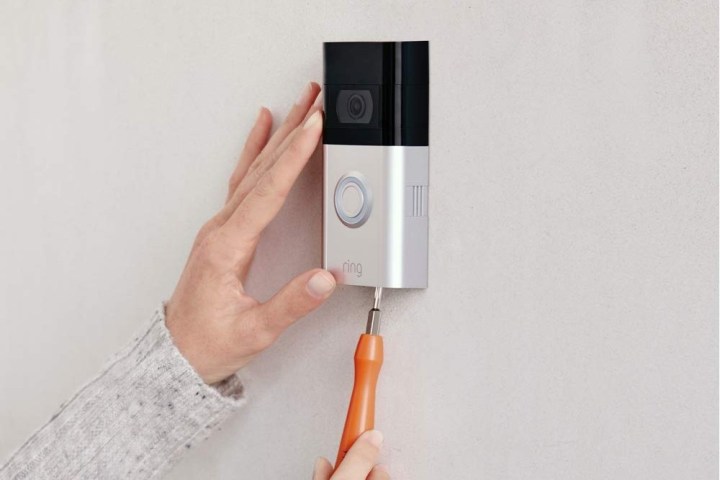
The Doorbell 3 is about twice as expensive as the Ring Video Doorbell 2nd gen, but does it offer twice the value? Well … not really. The biggest difference is compatibility with the 5GHz band for dual-band routers and a more durable design. It also comes with a “quick-release” battery pack that makes recharging easier. Otherwise, most of the specs are about the same.
Oh, and all customers should also know there’s a “Plus” version of the Doorbell 3. It’s about $30 more and includes what Ring calls “Pre-Roll” technology, which can show you four seconds of footage before the motion sensor is activated, giving you a clearer idea of what’s going on.
Bottom line: It’s baffling that the Doorbell 3 is twice as much as the standard model, with few changes beyond a better battery pack and 5GHz support — we suspect this model may be in for a price drop in the future. If you want this model, it may be wise to consider the Plus version, as Pre-Roll options may be useful for certain businesses or keeping a closer eye on your porch.
Read our in-depth Ring Video Doorbell 3 Review
Ring Video Doorbell Pro
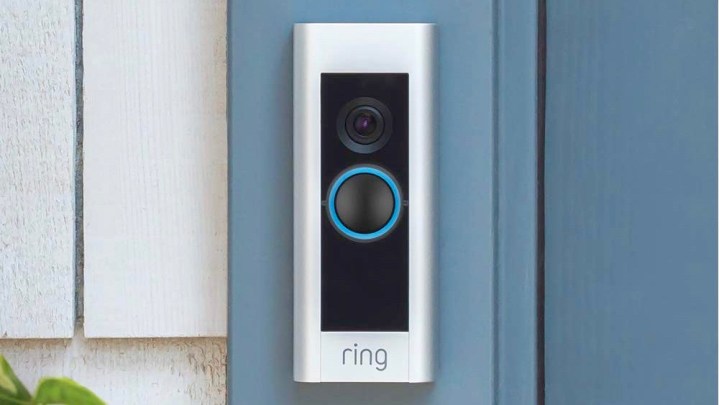
The Video Doorbell Pro remains a very popular option even though the Pro 2 has arrived. While the Pro 2 includes the latest technology, the Doorbell Pro sticks closer to the basics, which allows you to save a whole lot of money. The wired design is still top-notch, with a 1080p cam, two-way audio, motion detection, night vision, and all the other expected features.
The Pro distinguishes itself from models like the Wired and latest Battery 2020 Doorbells by offering enhanced dual-band Wi-Fi, more choices for interchangeable faceplates, options for built-in Alexa greetings, and a few other additions. It’s a nice halfway point between the feature-packed Pro 2 and the budget Wired model if you are most interested in a wired model.
Bottom line: If you’re not interested in extra features like improved audio, a bumped-up resolution, and better A.I. motion detection, the Ring Video Doorbell Pro is a high-quality doorbell that you can get for a much lower price than the Pro 2.
Ring Video Doorbell Pro 2
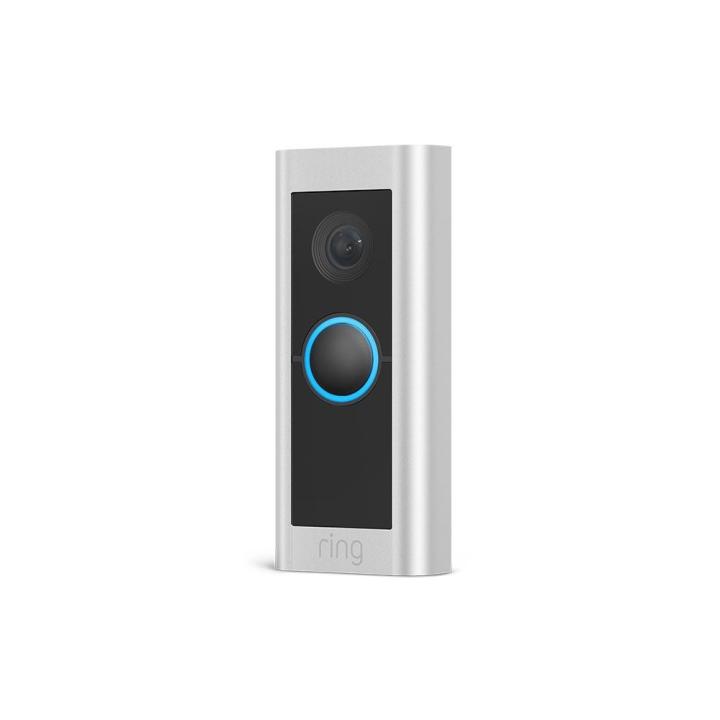
The Pro 2 begins to differ more significantly from the Doorbell and Doorbell 3. There’s no battery option for this model since it’s designed to be hardwired right into your existing doorbell wiring. That leaves fewer options for placement, but you also don’t have to worry about replacing a battery. Alexa functionality also means you can view the video right from an Amazon Echo Show.
You also have an enhanced dual-band option, allowing you to run the doorbell on the 5GHz band of your Wi-Fi router. There’s a beautiful new slim design that fits into the background more easily, and four faceplate options come in Satin Nickel, Pearl White, Venetian, and Satin Black.
The specs on this doorbell receive a significant upgrade over other models in the lineup. The camera is 1536p HD+ with a 150-degree field of view on the horizontal and vertical. However, its standout feature is the ability to track individuals in and around your front door with its 3D Motion Detection with Bird’s Eye View. It uses radar technology to pinpoint the exact location on a map where someone’s been in the vicinity of your front door.
Bottom line: The upgrades make this Ring doorbell the best option for your home if you don’t mind paying the higher price. The only exception is if you don’t have any current doorbell wiring. In that case, you should weigh the costs of installation to see if it’s worth it, and you may want to go with the original Doorbell or Doorbell 3.
Read our in-depth Ring Video Doorbell Pro 2 review
Ring Video Doorbell Elite
The petite Elite model is very similar to the Pro version, except for two main areas. First, the doorbell is even slimmer than before. Second, it cannot utilize the existing doorbell wiring. Instead, it uses the Power over Ethernet protocol via an Ethernet cable to get energy. If you’re willing to install an Ethernet cable, you have more placement options.
Bottom line: The Elite is twice the price of alternatives. However, with the higher price, you get a more reliable connection (Power over Ethernet). Ethernet may make installation more versatile, but it’s also likely to make it more expensive (unless your doorbell already has an Ethernet cable).
Ring Battery Doorbell Plus
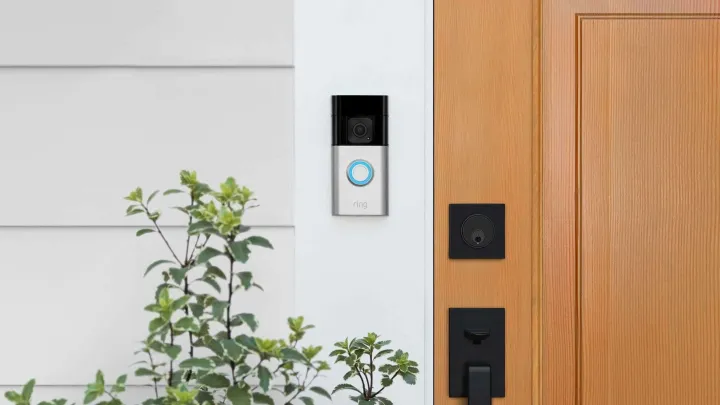
If you don’t want to mess around with wires, the Ring Battery Doorbell Plus is for you. Not only does it offer an easy installation process (just toss in some batteries and mount it to your home), but you’ll benefit from its enhanced 1536p resolution — which is better than most other doorbells in the Ring catalog.
Beyond that, this is your standard, high-end Ring doorbell. Motion alerts, customizable settings, and a quick-release battery pack are all here, as is support for Alexa and the robust Ring smartphone app. The HD+ resolution and head-to-toe video ratio make this one of the pricier items carrying the Ring logo, but there’s no doubt that your $180 is a worthwhile investment.
Bottom line: The Battery Doorbell Plus is a premium video doorbell that uses a head-to-toe aspect ratio to capture everything happening beyond your front door. Toss in an easy installation process, and it’s easy to see why this Ring product is so popular.
Ring Battery Doorbell Pro
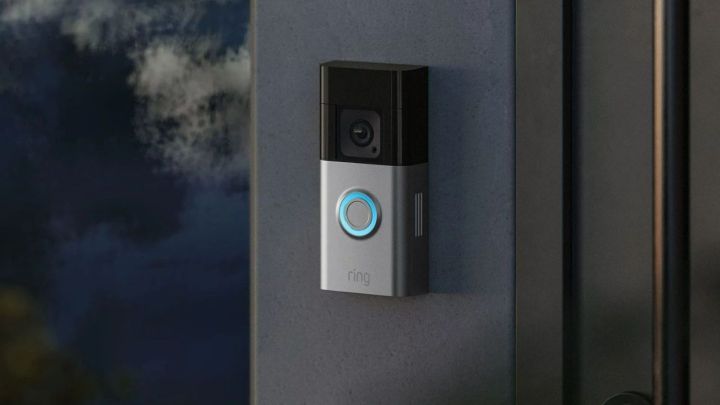
The Ring Battery Doorbell Pro bundles the convenience of battery-power with the premium features of wired models. It’s incredibly expensive at $230, but it’s arguably the best battery-powered video doorbell on the market.
With a vibrant 1536p resolution and support for HDR, the Ring Battery Doorbell Pro captures impressive images. Its generous 150-degree viewing angle is also great, allowing you to see packages at the foot of your doorstep without cropping out your taller guests. One of the most compelling reasons to pick up the Battery Doorbell Pro, however, is that it’s the first battery-powered doorbell to work with Bird’s Eye Zones. This gives you an aerial view of your property and provides you with detailed graphics on how motion approached your front door. It’s a powerful feature, and one that’s a welcome addition to any home seeking the best security possible.
Bottom line: The Ring Battery Doorbell Pro is just as powerful as most wired video doorbells but offers a convenient battery-powered installation process. There’s also an option to hardwire the device if you decide changing batteries is too much of a hassle.
Accessories
Ring also provides a number of accessories that can work with many of its doorbells, offering various enhancements. These include:
- Chime and Chime Pro: Indoor chime and notification speakers for the entryway.
- Solar Panel for the 2020 Doorbell: Helps charge the Doorbell’s battery in sunny conditions.
- Plug-in Adapter: A plug-in option that serves as a workaround for wired doorbells.
Editors’ Recommendations
Credit: Source link


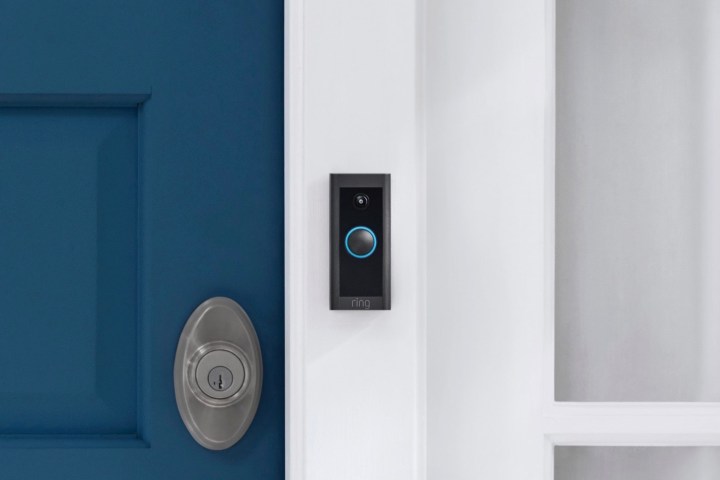

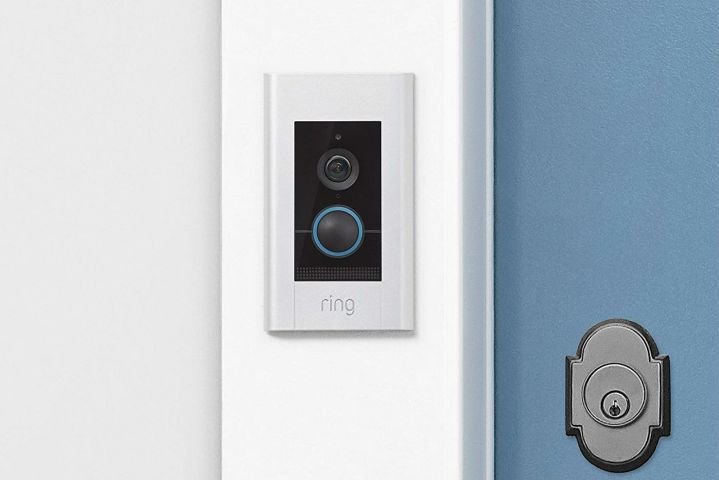
Comments are closed.